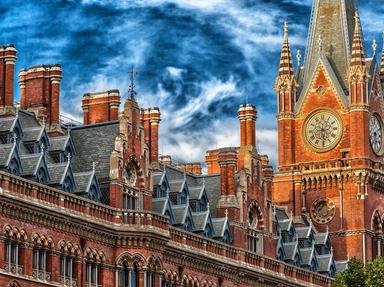Quiz Answer Key and Fun Facts
1. The first thing many people see when they arrive in Birmingham is the inside of a train station. In 2015, the city centre's largest station received a makeover. What is the name of Birmingham's busiest train station?
2. Birmingham has a number of places of worship, including the Cathedral Church of Saint Philip. What was unusual about this cathedral?
3. Take a step back in time to visit the country's oldest working cinema. In what year did Birmingham's Electric Cinema first open and begin showing silent films?
4. Birmingham is home to a famous chocolate factory. Which confectionery company had a working factory and museum in Bournville?
5. In 1999, one of Birmingham's theatres became the home of the Birmingham Royal Ballet. Which theatre regularly featured performances by the company?
6. The Thinktank opened in Birmingham in 2001. What was it?
7. Visitors can see the Back to Backs, a group of houses that were opened as a museum by the National Trust in 2004. Which kind of people typically lived in the Back to Backs?
8. Which attraction in Birmingham had a Tropical House built in 1852, a Subtropical House in 1871, and a bandstand in 1873?
9. One of the oldest buildings in Birmingham was rebuilt on a new site and opened as a museum in the new village of Bournville in 1917. What new name was the building given (a name which stuck for over 100 years)?
10. A huge collection of Anglo-Saxon gold and silver treasure known as the Staffordshire Hoard was discovered on farmland in 2009. Where in Birmingham was it initially put on display?
Source: Author
AcrylicInk
This quiz was reviewed by FunTrivia editor
agony before going online.
Any errors found in FunTrivia content are routinely corrected through our feedback system.
